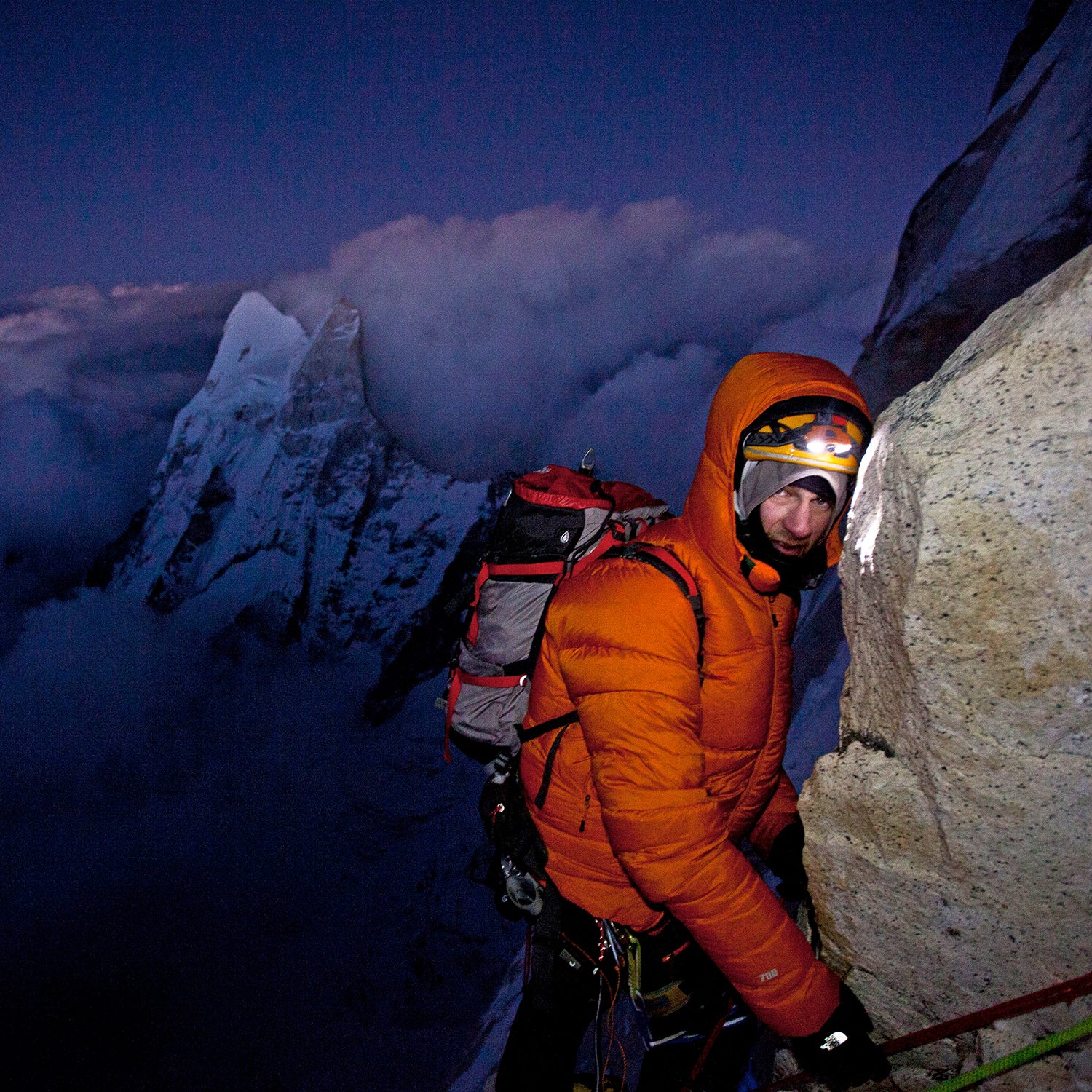In 2011, Jimmy Chin, Conrad Anker, and Renan Ozturk made a historic first ascent of Mount Meru in India’s Garhwal Himalayas. The climb was chronicled in the award-winning 2015 film . Prior to their successful ascent of the route, a number of the world’s best alpinists had tried it and failed—including the trio. In 2008, they came devastatingly close but ran out of supplies just 500 feet away from the peak, forcing them to turn back. Determined to attain their goal, they regrouped, returned three years later, and took care of unfinished business. Their journey demanded overcoming countless obstacles. None, however, was as significant as what Ozturk went through.
Maybe you’ve watched the movie or heard the story before. But it’s worth revisiting, because in it Ozturk embodies a useful psychological concept called hardiness—the ability to endure difficult conditions—something that all of us could benefit from, especially while much of the future still looks uncertain in light of the pandemic.
Five months before they were scheduled to depart for their second attempt, Ozturk was filming on a snowboard production with Chin in Jackson Hole, Wyoming. He caught an edge, went flying over a multistory cliff, and landed on his head, resulting in two crushed vertebrae in his neck and a severed vertebral artery, a major source of blood flow to the brain. According to Ozturk’s doctors, 90 percent of people who sustain his injury are never able to walk again. They told him he ought to be grateful to be alive, with a functioning brain no less.
Ozturk had a different perspective. He didn’t just want to walk again. He wanted to summit Meru as planned, five months later. “For me, it was worth the risk. It was something I had to do. For me it was worth the risk of dying,” Ozturk reflected in the movie.
Hardiness isn’t just helpful in mountaineering, though. Starting in 1981, research psychologists Suzanne Kobasa, from the University of Chicago, and Salvatore Maddi, from the University of California at Irvine, followed a group of managers at Illinois Bell Telephone (IBT) in a six-year longitudinal . At the time, the telecommunications sector was undergoing drastic change, with mergers and acquisitions, and IBT was forced to downsize from over 26,000 employees to 13,000. As a result, about two-thirds of the managers suffered from burnout, depression, and anxiety during the study period. Incidences like divorce, heart disease, stroke, and even suicide rose, too. The other third of the sample, however, not only survived but thrived. Those managers felt energized, healthy, and deepened their personal and professional relationships.
Kobasa and Maddi wrote that the latter group demonstrated hardiness, which they defined as “a set of attitudes that motivates one to respond to stressful circumstances in ways likely to produce resiliency, by turning potential disasters into opportunities instead.” Hardiness, they wrote, is integral to finding “the existential courage that facilitates an ongoing search for meaning in life.”
Since Kobasa and Maddi’s foundational work, other research has shown that hardiness protects against stress in populations ranging from to . Hardiness and the existential courage it yields are exactly what Ozturk demonstrated after his accident in 2011. And these are things that we can cultivate in ourselves to help us through the final miles of a pandemic marathon.
How to Develop Hardiness
Kobasa and Maddi determined that hardiness was the result of three factors: commitment, control, and challenge, or what they refer to as the “three C’s.”
Commitment
Commitment asks that you accept the situation you are in—whether you like it or not—and move forward anyway. You resist the temptation to turn away from obstacles and lean into them instead. Rather than “sink into isolation and alienation,” wrote Kobasa and Maddi, you do the hard work of staying involved with the people and events going on around you.
For Ozturk, this meant not shutting down his goal to summit Meru with his partners, but instead doubling down and working toward it despite severe injuries. For all of us, this , such as connecting with friends, colleagues, and family over Zoom, even when it feels easier to sink into a lonely rut.
Control
Control involves figuring out what you can do to productively influence a situation, and then taking action. When you display this trait, wrote Kobasa and Maddi, you “struggle to have an influence on the outcomes going on around you, even if this may seem difficult in certain circumstances.”
Ozturk lived every hour of every day between his near fatal accident and the scheduled return to Mount Meru with a singular focus on gaining the strength and stability to climb. He underwent a meticulous rehabilitation program that began with spinning on an indoor bike against hardly any resistance for just minutes at a time, then gradually increasing his training load to an hour until he was completing full-on weight workouts and two-a-day sessions. Throughout the film, it’s clear that Ozturk didn’t feel sorry for himself—if for no other reason than it would have consumed too much precious rehabilitation time.
In a current example, control would suggest that we identify what we can do safely amid COVID-19 and then throw ourselves into those activities, instead of being frustrated by the larger picture. For instance, maybe you take on a fitness goal, put together and work through a reading list, or focus on learning a new skill to help either your physical or mental health. Pursuing progress, growth, and mastery are all improved mental health. For the things we cannot control, it’s best not to waste energy worrying about them—which is extremely difficult, of course, but worth striving for.
Challenge
A challenge mindset views life as an ongoing and ever changing exercise with no fixed outcome. “You find the process of continuing to learn from your experiences, be them positive or negative, developmentally fulfilling. Feeling threatened by change feels superficial to you,” Kobasa and Maddi wrote. In other words, change is the perpetual condition of being alive, so you might as well get used to it and perhaps even welcome it.
Ozturk never viewed his accident as the end of his climbing career, let alone his life. Rather, he saw it as an obstacle to work through and overcome, growing as a person along the way. In an interview with GearJunkie in 2015, Ozturk the accident an unexpected setback. “You have to teach yourself to overcome things and do things if you’re passionate enough about them,” he said. The challenge component of hardiness is also intertwined with setting big and broad goals for yourself. For example, if your in life are to become a stronger, kinder, and wiser person, then literally anything that you experience—especially challenges—will move you toward them, because everything can be a learning experience.
Using a , Kobasa and Maddi repeatedly found that the stronger someone is in the three C’s of hardiness, the greater their chance is of surviving and thriving during tumultuous changes. Developing hardiness isn’t easy, but it will give you the tools to better ride life’s waves.
Brad Stulberg () coaches on performance and well-being and writes �����ԹϺ���’s Do It Better column. He is cofounder of and bestselling author of the book .��


